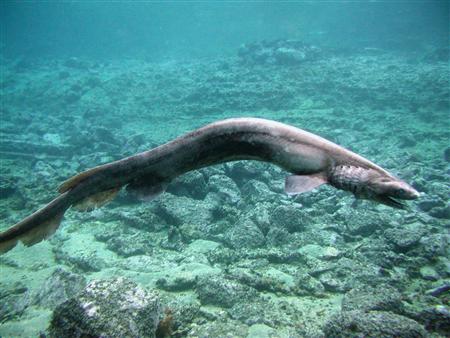Name: king of herrings or giant oarfish,
Scientific Name: Regalecus glesne
FAQ:
- The king of herrings or giant oarfish, Regalecus glesne, an oarfish of the family Regalecidae, is the world's longest bony fish. Rarely sighted, it is found in all the world's oceans at depths of between 300 and 1000 meters. Most sightings have been in the north Atlantic, with most specimens found either dead or dying in shallow waters.
- The king of herrings is neither a true herring, nor a close relative. According to the Great Book of Animals, its name comes from being sighted near shoals of herring, which fishermen thought were being guided by this fish.It is scaleless, ribbon-shaped and silvery with a long, red dorsal fin
- The king of herrings is the world's longest bony fish. Its total length can reach 17 m, and it can weigh up to 300 kg. Its length (the record is 17 m (56 ft)) and bizarre appearance are presumed to be responsible for some sea serpent sightings


















